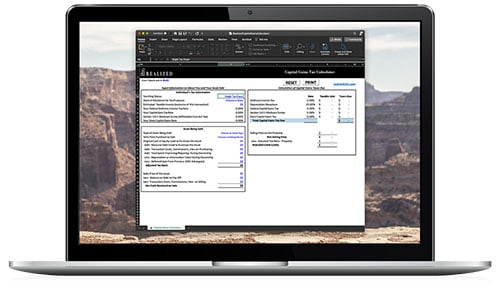
Selling a primary residence for a profit can mean paying a lot in capital gains taxes. Unlike investors, the 1031 exchange isn’t available for primary residences. However, homeowners can still limit or completely exclude capital gains taxes. One of those options is an eligibility test called the 2 out of 5-year rule. Let’s see how it works.
Capital Gains Exclusion On Primary Residence
We’re going to first go over what the capital gains exclusion rules are for a primary residence. The exclusion allows single filers to exclude up to $250,000 when selling their primary residence. For married couples, the amount goes up to $500,000.
On a house that generates a $400,000 profit, a single filer will pay capital gains taxes on only $150,000. A married couple will pay no capital gains taxes since their exclusion is greater than the gain on the sale of the home.
A quick detour before we continue. What constitutes a primary residence? This is where you live and receive your mail most of the time. If you have three houses and spend most of your time at house A, it will likely be considered your primary residence. If you have more than one house, you’ll want to discuss this with your accountant to ensure you’re meeting the primary residence eligibility test.
The next thing needed to complete the exclusion is the 2 out of 5-year rule. It states that residents must have lived in the home for 2 out of the last five years. The two years do not need to be consecutive. The homeowner can also rent out the home during the five years, just as long as they live in it for 2 of those five years.
The exclusion can be claimed more than once. This means a tax filer will be selling a home more than once. Because of how the 2 out of 5-year exclusion works, the exclusion can only be used once every two years.
The above two rules are part of the Section 121 Exclusion.
Exceptions to the 2 Out of 5 Year Rule
One exception to the 2 out of 5-year rule applies to people in military service. They can get an exemption from the rule if they have to go overseas. The deployment must be for at least 90 days or an indefinite period. Under those circumstances, the rule can be suspended for five years.
One of the following criteria must also apply for this exemption:
- A duty station that’s at least 50 miles from his or her main home
- Residing under government orders in government housing
Another exemption is someone who is unable to physically or mentally care for themselves and has to spend time in a facility. They can apply that time towards the two years. Note that the facility must be licensed for specific care.
Other exemptions to the rule include:
- Death of spouse
- Separation or divorce
- The sale involved vacant land
- The previous home was destroyed or condemned
- You owned a remainder interest and sold that right
- You were a service member during the time of ownership
- You acquired or relinquished the house in a 1031 like-kind exchange
Additionally, there are partial exclusions that can be met with one of the following eligibility tests:
- A work-related move
- A health-related move
- Unforeseeable events such as death, destruction of the home, giving birth to two or more children from one pregnancy, or becoming eligible for unemployment benefits
A partial exclusion considers time spent living in the residence and meeting one of the above partial eligibility tests.
Although it might look as though you qualify for one of the above eligibility tests, it’s best to verify any potential exclusions with your accountant.
This material is for general information and educational purposes only. Information is based on data gathered from what we believe are reliable sources. It is not guaranteed as to accuracy, does not purport to be complete and is not intended to be used as a primary basis for investment decisions. It should also not be construed as advice meeting the particular investment needs of any investor.
Realized does not provide tax or legal advice. This material is not a substitute for seeking the advice of a qualified professional for your individual situation.
Hypothetical examples shown are for illustrative purposes only.


